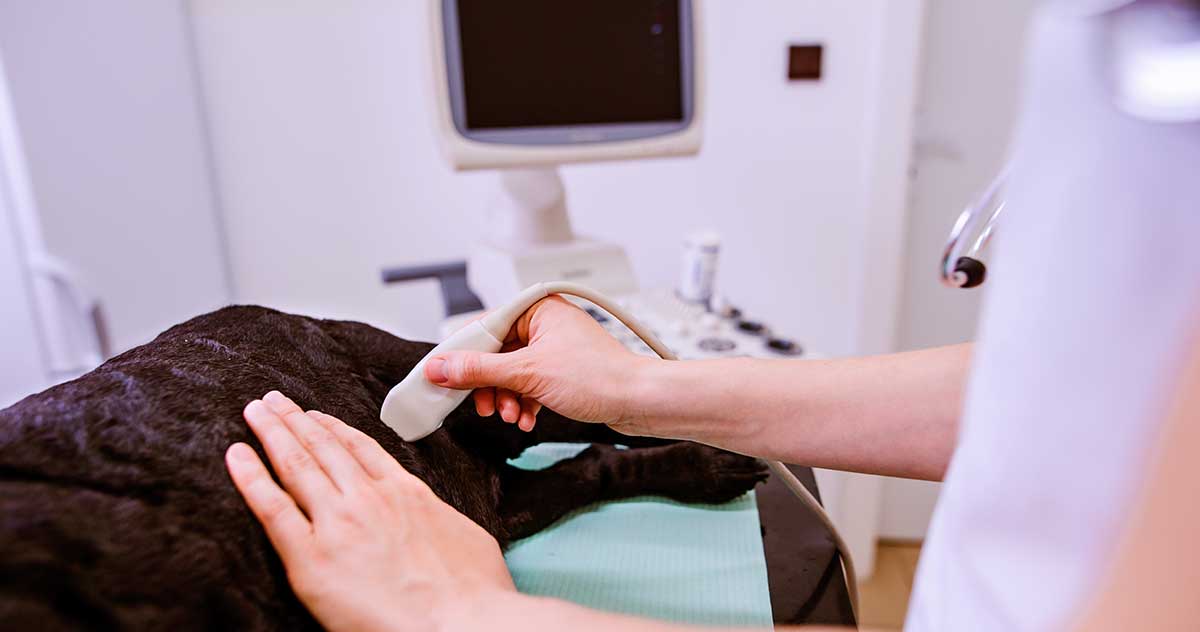Ferntree Gully Veterinary Hospital understands just how much pets become part of the family. That is why we use the latest technological tools to help assess and diagnose your pet’s condition. One of the tools that we use for non-invasive diagnoses is an Ultrasound.
What is a pet ultrasound?
Pet ultrasounds are imaging machines to help see what is going on in your pet’s body. It is used more and more because it safer than x-rays and provides a more detailed image.
Ultrasounds use high frequency sound waves to create an image. The sound waves bounce back and create an echo. Certain tissue will absorb the sound waves rather than bounce them back. This creates a “picture” which can be analysed. Using the information from the image the vet is able to determine if there are any concerns or if everything is in order or if further testing may be required.
When does the vet use an ultrasound?
Ultrasounds are helpful in so many ways: To monitor a pregnancy, find a tumour, mass or tear and many other potential issues. There are symptoms that will prompt the use of an ultrasound, these are common ones:
- Unexplained or noticeable weight loss if your pet is not on an eating plan to lose weight.
- Loss of appetite which could indicate a mass or a blockage
- Vomiting or prolonged diarrhea
- Swollen, tight or distended abdomen
- Blood tests which come back abnormal
- A build-up of fluid in the abdomen
- Problems with the reproductive organs or urinary tract
- Prolonged and unexplained lethargy or illness
- Pregnancy
Are pet ultrasounds safe?
Yes. Sound frequencies which are used to create and ultrasound image are considered safe, by experts. The alternative is an x-ray which uses radiation and has minor potential dangers, and the image produced by an x-ray is not as clear or detailed as the ones produced by an ultrasound.
What to expect during an ultrasound
Before you bring your pet in for an ultra sound the vet will let you know if your fur baby needs to fast or not. Usually your pet should not eat or drink anything for between 8 and 12 hours before the ultrasound.
The vet will shave a section of your pet’s hair to make sure they get a clear image. Animals do not need to be sedated for an ultrasound, unless they are in distress or very uncomfortable. Depending on the pet, the owner should be on standby to help keep them calm.
The ultrasound scan usually takes between 15 and 20 minutes. Viewing and reporting is done after the scan and takes anywhere from 20 minutes to overnight depending on what is found.
Make sure you confirm the cost of the ultrasound before you make the appointment. The prices vary depending on the location that is going to be looked at, your pet and the expertise required to carry out the ultrasound. Specialists consults are more expensive than a general practitioner.

